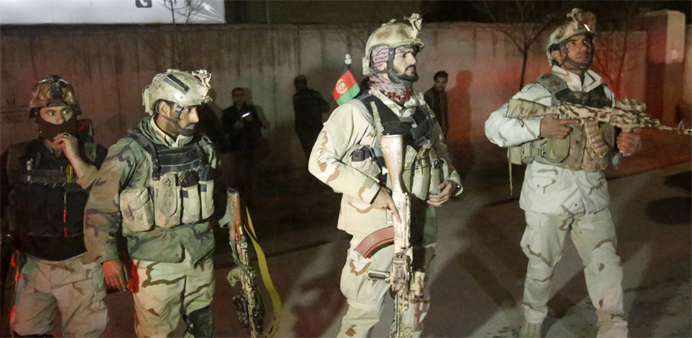Reuters/Lashkar Gah, Afghanistan
Afghan forces are battling to hold Marjah district centre in the volatile southern province of Helmand that Taliban insurgents have cut off as part of a months-long campaign in which they have taken three districts and threatened the regional capital.
Helmand police chief Abdul Rahman Sarjang said on Sunday security forces were holding on in the governor's compound and police and army headquarters but that surrounding areas were all in the hands of the insurgents.
"Afghan police and army have a presence in Marjah district centre and the rest is controlled by Taliban," Sarjang said.
Helmand, an arid, semi-desert region and major centre of opium cultivation, has long been one of the Taliban's heartlands and they have put increasing pressure on security forces since the withdrawal of international troops from combat last year.
Major Taliban attacks in Kandahar and the capital Kabul last week underlined the Islamist movement's ability to strike high-profile targets and heaped pressure on the government of President Ashraf Ghani. But its steady advances in Helmand pose a potentially more serious threat to the U.S.-backed government.
In a campaign with distinct echoes of the build-up to September's attack on the northern city of Kunduz, their biggest success in the 15-year war, Taliban forces have picked off a series of districts around the provincial capital Lashkar Gah.
Over recent weeks, insurgents have taken the districts of Musa Qal'ah and Now Zad in the north of the province as well as Khanishin, a significant drug smuggling hub, to the south as they have tightened their grip on the province.
The fighting has been going on around Marjah for more than a month and the main road linking the district to Lashkar Gah some 35 km (21 miles) away has been cut with around 12 km of the route under Taliban control.
"We plan to launch an operation to clear this area from the Taliban but they have planted hundreds of bombs which is making it very difficult," said Sarjang.
Operations were also being hampered by supply interruptions and the chronic problem of desertions among the badly squeezed security forces. Around 10 percent of the 10,000-strong police and army forces are absent from duty.



